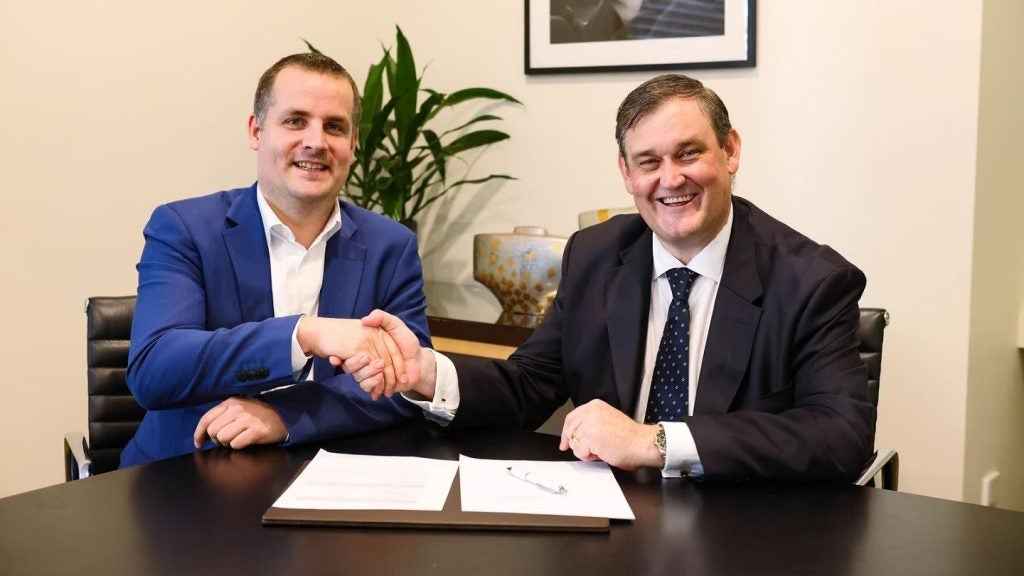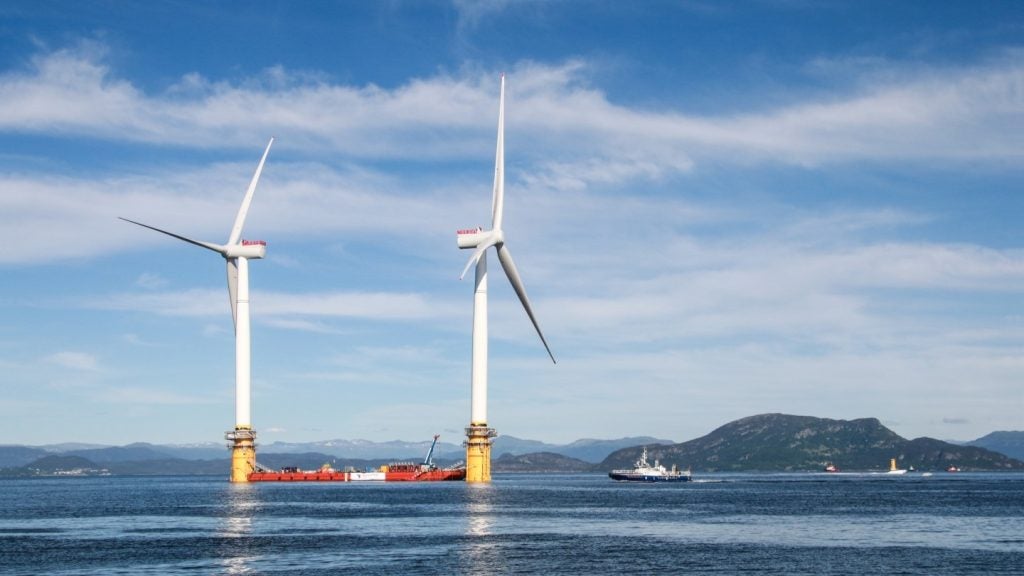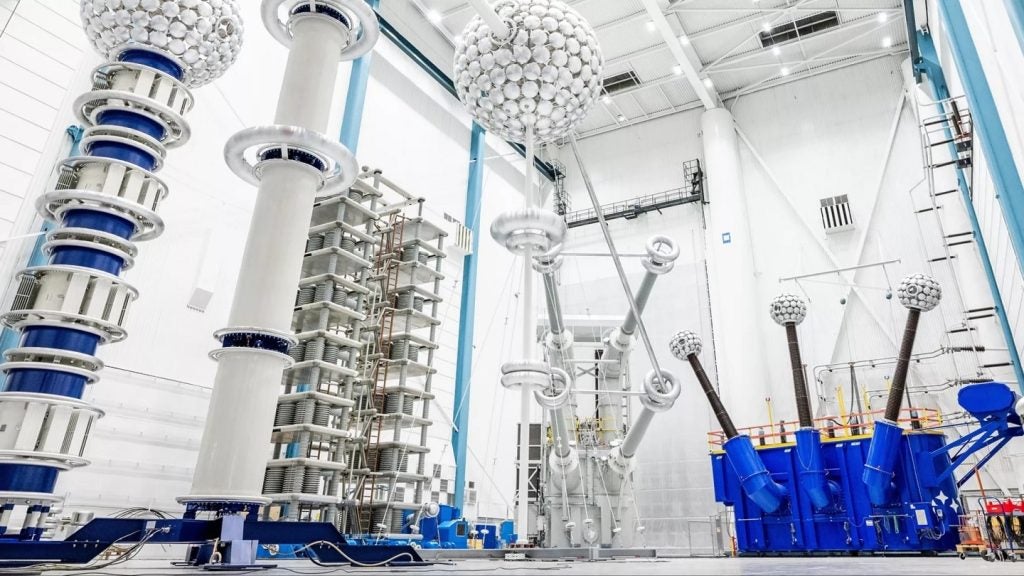“Airborne wind [energy] has enormous potential to accelerate the clean energy revolution,” proclaimed Jamaal Bowman (D-NY), then-chairman of the US House of Representatives’ Subcommittee on Energy, in early December.
Although there is not a huge amount Democrats and Republicans agree on these days, it seems this novel approach to renewable energy generation is one amenable matter. Bowman was flanked by ranking member Randy Weber (R-TX) in introducing the bipartisan Airborne Wind Energy Research and Development Act, a bill establishing a research and development programme at the Department of Energy to explore the potential of this exciting new clean technology.
“Accessing stronger, more consistent winds at higher elevations will help strengthen the grid as we shift to renewable energy, while also reducing impacts from land use and resource extraction,” concluded Bowman.
In fact, numerous companies across the globe are already developing large kites and gliders that can harvest wind energy up to a half-mile above ground, but while still in its nascent stages of development, the technology has floated about for well over a decade now. So does it really have the potential to contribute to the energy transition, or is it a gimmicky distraction to the tough grind of scaling up existing renewables?
Blowing in the wind
Airborne wind energy (AWE) is the moniker given to a variety of autonomous flying devices that harness wind energy high up in the air, far above the heights reachable by traditional wind turbines. “The higher you go, the more wind there is,” explains Cristina Archer, director of the Center for Research in Wind at the University of Delaware, US.
See Also:
A control system steers the kite or glider so it flies stably in the wind. The aerodynamic forces developed by the device are exploited both to keep it (and the tether) airborne and to produce power. “This is fundamentally different from wind turbines, where all aerodynamic forces except for the one that generates torque are counterbalanced by the tower,” says Lorenzo Fagiano, an engineer at the Polytechnic University of Milan, Italy, and board member of the industry association Airborne Wind Europe.
How well do you really know your competitors?
Access the most comprehensive Company Profiles on the market, powered by GlobalData. Save hours of research. Gain competitive edge.

Thank you!
Your download email will arrive shortly
Not ready to buy yet? Download a free sample
We are confident about the unique quality of our Company Profiles. However, we want you to make the most beneficial decision for your business, so we offer a free sample that you can download by submitting the below form
By GlobalDataToday, there are three main airborne wind energy designs: pumping AWE, drag AWE and rotating kite networks. For pumping AWE – as employed by Norway’s Kitemill, Twingtech of Switzerland, Germany’s SkySails and Kitenergy in Italy – the tether is reeled around a winch at ground level, and the winch linked to an electric machine. Power is generated in a cycle made of a traction phase (where the kite pulls the tether, which is then reeled out, while the electric machine acts as a generator driven by the winch) and a retraction phase (where the kite exerts a small force and the electric machine is used as motor to reel in the tether back around the winch).
For drag AWE – as used by Germany’s kiteKRAFT – the kite is rigid and hosts onboard turbines with generators and power electronics. The kite is reeled out once and flies patterns (loops or figure of eight) in the crosswind and the onboard turbines convert wind energy and transfer it down the cable to the ground station.
In rotating kite networks, there is a stationary soft kite that keeps airborne a structure of tethers and airfoils. The airfoils rotate around a common axis thanks to the wind and to the design of the tethers’ network. On the ground, the tethers are linked to a generator and make it rotate, thus producing power.
Although each design has its advantages and drawbacks, the only one currently deployed commercially is a pumping AWE system set up by SkySails off the east coast of Mauritius in 2021. The kite harvest winds at 300m, delivering around 100kW of electricity – roughly enough to power 50 homes. “The building blocks to scale up to 500kW and 1MW are already available, or will be in a few years with enough funding,” adds Fagiano.
A complementary role for airborne wind energy
According to a recent white paper by BVG Associates, on behalf of Airborne Wind Europe, AWE enables increased energy generation per square kilometre, at lower carbon intensity, compared with other renewables – and eventually at lower cost. Other advantages include a smaller environmental impact and material use, reduced upfront costs and logistical requirements, an effective use of space, and the possibility of reusing foundations from decommissioned wind farms.
When deployed inland, the system is easily transported and installed – fitting into a few trucks. It has lower visual impact than traditional wind turbines, and does not fly if there is no wind. Offshore, AWE systems will be much less expensive and more feasible in deeper offshore locations than their traditional counterparts. “These features make AWES [airborne wind energy systems] extremely promising and initially fully complementary to conventional wind, meaning that it can enlarge the number of locations where wind energy can be harvested,” says Fagiano.
Indeed, there are many locations on Earth where there is a lot of wind at 500m but little at the 100m or less of a traditional wind turbine’s reach. “If you look at a map, you may find that 20% of land is feasible for wind energy at 100m, but 40% is feasible at 500m,” says Archer. “So, essentially, you are doubling the resource.”
Estimates also indicate that AWE can have significantly lower costs than other renewable and fossil sources by around 2035–40 with enough investments, adds Fagiano. BVG concluded that, by 2050, AWE will have a 40% lower levelised cost of energy, or LCOE (the metric typically used to compare the cost of different energy technologies) than traditional wind, as the material costs are already 70% cheaper. AWE is much easier to install, and it shares development synergies with other important technologies of the future such as drones and unmanned aircraft. “You can set up an AWE system for as little as $20,000,” says Archer.
In reality, AWE will likely complement rather than compete with traditional renewables, as the large airspace required for each device limits the amount of power they can generate at a utility scale. Instead, they will be best employed in remote locations where it is impractical to set up other renewable energy technologies. “For example, in many mountainous locations it is not feasible to transport or build a wind or solar farm,” says Archer. “With this, you can quickly truck in a system, throw the kite up and start generating electricity on demand – beats using diesel generators. That is why the military is very interested.”
AWE could also play a role in generating green fuels such as hydrogen and ammonia. “You could build a platform offshore with electrolysers and AWE devices, and actually make hydrogen entirely offshore,” says Archer.
Inherent complexity
However, nothing comes cheap and there are – as with all breakthrough clean energy technologies – drawbacks and challenges to AWE. The concept is inherently more complex than traditional wind, and the fact that the system is kept airborne by the wind itself has made it more difficult to test and optimise various designs, since a minor design flaw can make the difference between a kite that can fly stably and one that is unable to stay airborne. That is why it has taken so long for the technology to blossom.
“In the last 15 years, different concepts have been developed in parallel by various groups and research institutes, and it took time to fully understand the design trade-offs and find the right engineering approach,” says Fagiano.
Google acquired an AWE project back in 2013, led by Makani Technologies. It did some test flights but could not make the economics work and shuttered the project in 2020. “Google imposed a ‘moonshot’ strategy of upscaling as soon as possible,” recalls Fagiano. “The complexity of the system and the fact that it was the first time made it a very difficult endeavour. When the developers spotted the various design flaws, it was already too expensive and too late to correct.”
Even today, there are still several important roadblocks curtailing the industry’s development. One is just how time-consuming it is to obtain all the permits to install and operate an AWE system, as there are no established norms and standards. “It is a chicken and egg problem: as long as there are not many systems around, the authorities are not motivated to establish regulations; and as long as there are no established regulations, development times will be slower and investments more difficult to trigger,” explains Fagiano.
Finally, there is the money – or the lack of it. The investments made in AWE in the last 15 years pale in comparison with other technologies, points out Fagiano. “This is not a technology that can make profit after two years; it requires continuous support with a stage-gate approach [a project management technique in which a project is divided into distinct stages, separated by decision points], as recommended in the recent sector study commissioned by the European Commission,” he says.
Airborne wind energy: “Another little piece in the puzzle”
Today, the entire AWE market is only valued at a few billion dollars; but, at utility-scale generation, the market could grow to around $100bn (€92.39bn) by 2035–40 and several hundreds of billions soon after, forecasts Fagiano. “The technology’s development is really speeding up as most companies have nailed the most important aspects,” he says.
Indeed, based on the sales forecasts of leading AWE technology developers and the assumption that the AWE market follows the same trend as the established wind turbine market 40 years ago, BVG estimates the cumulative global deployment of AWE could reach 5GW by 2035 and at least 177GW by 2050.
However, for that growth to be realised, test sites need to be established to allow for the continuous operational hours required to develop reliable products and industry standards, providing sufficient reassurance to customers and authorities. That requires agreement between numerous authorities, including in aerospace, defence, and public health and safety. In July 2022, German energy giant RWE completed the construction of an AWE test site in Ireland as part of the MegaAWE project, a three-year EU-sponsored project that aims to bring utility-scale AWE closer to commercialisation.
Over the next 15 years, BVG estimates that €5bn of public support will be needed to realise the net benefits of AWE; comprising €4bn for project electricity price support and €1bn for industry development support. The extra price support would see AWE break even with established wind technology by the mid-2030s. To put that into context, €4bn is the price of a single 1.2GW offshore wind farm, it says.
A report prepared for US lawmakers by the National Renewable Energy Laboratory (NREL) was slightly less bullish. It agreed that, when coupled with potential capital expenditure reductions, AWE has the potential for low-LCOE devices but noted – in contrast to the BVG assessment –that commercial-scale deployment may be limited because of an estimated capacity density of between 0.4 and 4MW/km2, which is lower than the average 3MW/km2 of traditional wind.
Nonetheless, even in the NREL scenario, the technology would play an important supporting role in the push to decarbonise the global economy by 2050. To hit net zero, the world needs to double its electricity production by 2050 as further economic development of poorer nations and the electrification of sectors such as transport will see demand continue to rise. That is a huge amount of electricity, and the goal is that 90% of it (90% of 200% of today’s production) will need to come from renewables. “That won’t happen with the current technologies alone,” Fagiano says flatly.
Archer even believes AWE could eventually supply as much as 10% of the world’s power needs. “Airborne wind is another little piece in the puzzle,” she sums up. “It won’t be a huge piece, but it will help. Who knows, maybe one day every home will have its own kite.”
This piece was originally published on Power Technology's sister site, Energy Monitor.







